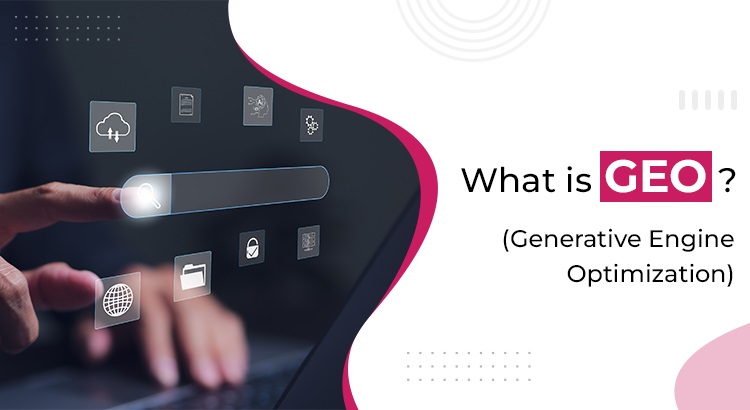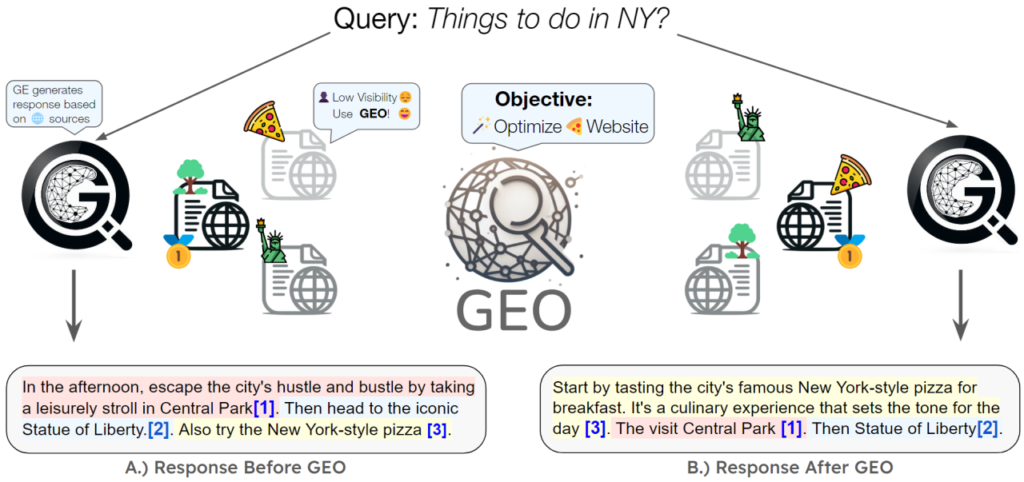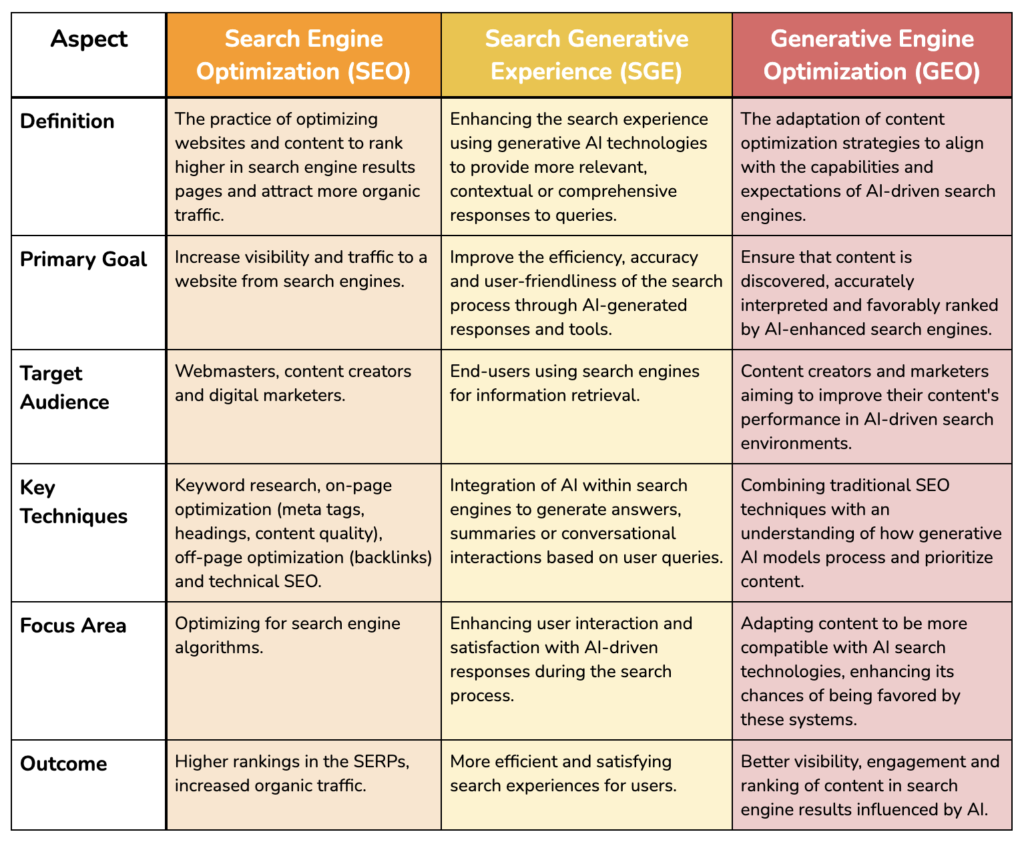
There’s a new thing in the SEO world called Generative Engine Optimization, or GEO. It’s all about making sure your content is set up to do well with Google’s new way of searching, which they call Generative Search Experience.
Generative Engine Optimization (GEO) is a fancy term for using artificial intelligence (AI) to make content that’s really good for search engines. With GEO, AI helps create content that’s packed with the right keywords and phrases, making it more likely to show up when people are searching online. This can boost how often your website pops up in search results and bring more people to your site. Let’s dig into how GEO works.
- GEO is a fresh idea in the world of search engine optimization. As businesses try to find better ways to get noticed online, GEO is getting attention because it seems like a smart way to do it.
- We’ll talk about GEO, what it does, and why it’s a good idea for your business. It’s gaining popularity among web developers and digital marketers who want to get their pages seen more on search engine results.
- GEO tries to connect the dots between two things: content-driven SEO, where you use keywords to boost your ranking, and machine learning, which uses fancy algorithms to go through loads of data and figure things out.

Generative Engine Optimization (GEO) refers to a methodology or approach in search engine optimization (SEO) that leverages the power of generative models, such as natural language processing (NLP) algorithms, to enhance various aspects of SEO tasks.
In traditional SEO practices, optimization often involves keyword research, content creation, link building, and technical optimization. However, with advancements in AI and machine learning, there’s been a shift towards more sophisticated techniques, including the use of generative models.

Here’s how Generative Engine Optimization typically works:
- Content Generation: Generative models, particularly those based on deep learning techniques like recurrent neural networks (RNNs) or transformers, are used to create high-quality, relevant content. These models can generate text that mimics human writing style and can be used to create blog posts, articles, product descriptions, and more.
- Keyword Optimization: Generative models can assist in identifying relevant keywords and phrases for a given topic or niche. By analyzing large datasets of search queries and content, these models can suggest keywords that are likely to improve a page’s ranking and visibility in search engine results pages (SERPs).
- Natural Language Processing: NLP algorithms are employed to understand the context and semantics of content. This enables better optimization of on-page elements such as meta tags, headings, and body text for improved relevance and search visibility.
- Content Personalization: Generative models can be used to create personalized content experiences for users based on their preferences, browsing history, and other factors. By delivering more relevant content, websites can improve user engagement and retention, which can indirectly impact SEO performance.
- Content Expansion and Diversification: Generative models can help in diversifying content offerings by generating content in different formats such as videos, infographics, or interactive experiences. This not only enhances user experience but also provides more opportunities for attracting organic traffic from various channels.
To achieve this, GEO leverages several techniques, including:
- Keyword research: Identifying the most relevant and high-volume keywords for specific topics and industries.
- Content generation: Using AI-powered language models to generate high-quality, human-like content that covers a wide range of topics and subtopics.

What are the advantages of using Generative Engine Optimization (GEO) over Traditional SEO Techniques?
- More Visitors: GEO boosts your website’s ranking in search results, attracting more visitors because it becomes easier for people to find your site when they search for relevant keywords.
- Better Returns: GEO enhances your return on investment (ROI) by allowing you to target your marketing efforts more accurately. This can lead to increased sales and revenue while reducing marketing expenses.
- Increased Visibility: GEO improves your website’s visibility in search engine results, making it more likely for potential customers to come across your site. It also helps in leveraging social media and other online channels to increase your website’s visibility.
- Stronger Brand Recognition: By enhancing your website’s visibility, GEO contributes to improved brand recognition. This professional image can boost credibility and make your brand more memorable to potential customers.
- Improved Customer Relationships: GEO aids in better targeting of marketing efforts, facilitating improved communication and interaction with both potential and existing customers. By creating a user-friendly website, GEO enhances customer satisfaction and loyalty.
Overall, Generative Engine Optimization represents a fusion of AI and SEO techniques aimed at creating high-quality, relevant content and optimizing various aspects of a website to improve its visibility and performance in search engine results. As AI continues to advance, we can expect further innovations and refinements in this field.



